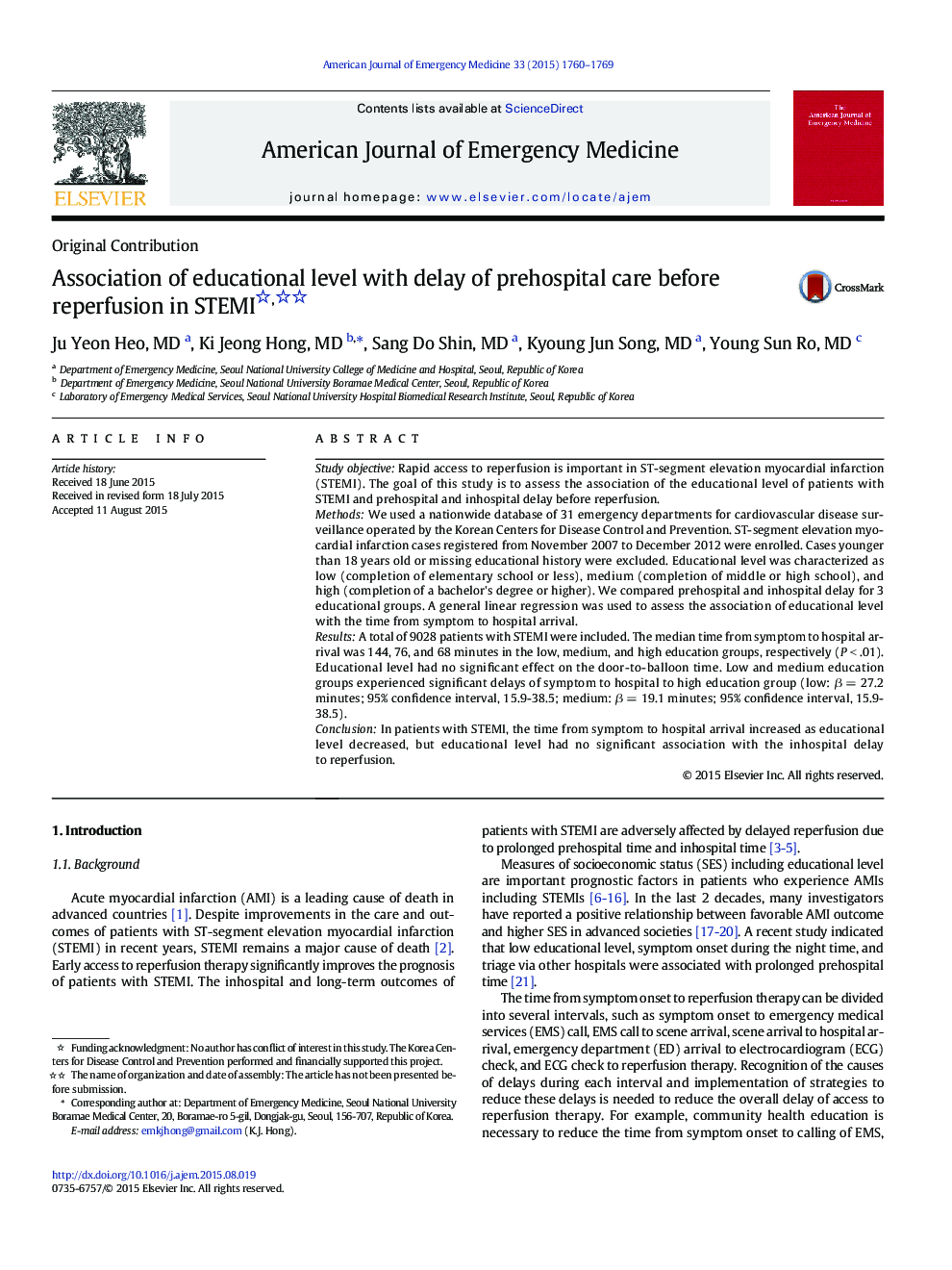| Article ID | Journal | Published Year | Pages | File Type |
|---|---|---|---|---|
| 3223526 | The American Journal of Emergency Medicine | 2015 | 10 Pages |
Study objectiveRapid access to reperfusion is important in ST-segment elevation myocardial infarction (STEMI). The goal of this study is to assess the association of the educational level of patients with STEMI and prehospital and inhospital delay before reperfusion.MethodsWe used a nationwide database of 31 emergency departments for cardiovascular disease surveillance operated by the Korean Centers for Disease Control and Prevention. ST-segment elevation myocardial infarction cases registered from November 2007 to December 2012 were enrolled. Cases younger than 18 years old or missing educational history were excluded. Educational level was characterized as low (completion of elementary school or less), medium (completion of middle or high school), and high (completion of a bachelor's degree or higher). We compared prehospital and inhospital delay for 3 educational groups. A general linear regression was used to assess the association of educational level with the time from symptom to hospital arrival.ResultsA total of 9028 patients with STEMI were included. The median time from symptom to hospital arrival was 144, 76, and 68 minutes in the low, medium, and high education groups, respectively (P < .01). Educational level had no significant effect on the door-to-balloon time. Low and medium education groups experienced significant delays of symptom to hospital to high education group (low: β = 27.2 minutes; 95% confidence interval, 15.9-38.5; medium: β = 19.1 minutes; 95% confidence interval, 15.9-38.5).ConclusionIn patients with STEMI, the time from symptom to hospital arrival increased as educational level decreased, but educational level had no significant association with the inhospital delay to reperfusion.
